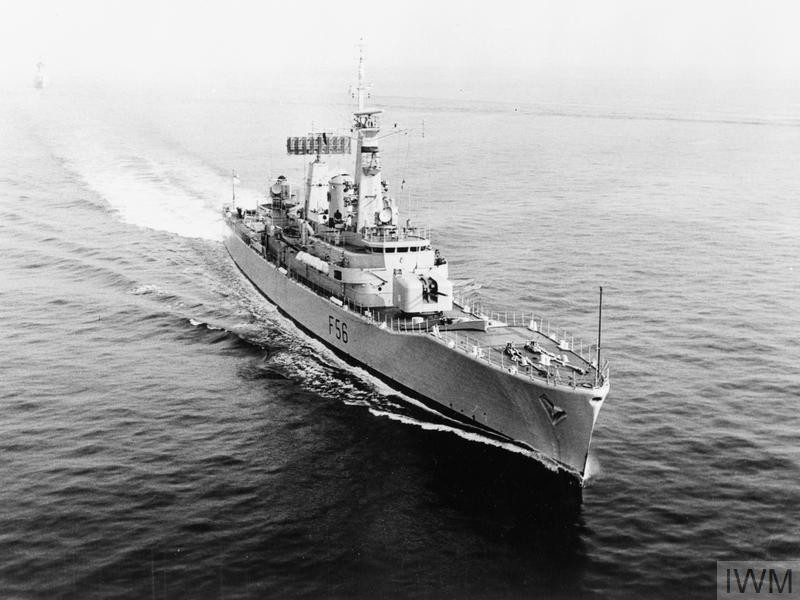By Monday 19 April 1982 hopes of a diplomatic solution to the Argentine invasion of the Falklands, avoiding bloodshed, were fading fast.
US Secretary of State Alexander Haig’s shuttle diplomacy mission had just about run out of steam after 30,000 miles, and although diplomatic lines of communication were kept open – through the Peruvian Embassy in London, representing Argentina, and the Swiss Embassy in Buenos Aires, representing the UK – there was a dawning realisation that neither side would budge sufficiently on the basic framework required to commence talks (Argentine withdrawal, a ceasefire and talks over the future of the islands) to make further negotiations a viable option.
Out in mid-Atlantic, the bulk of the Amphibious Group reached Ascension Island on 19 April, where they were joined by Landing Ship Logistic RFA Sir Tristram, which had been diverted from Belize.
Further reinforcements to the Task Force entered the picture today, including Type 22 frigate HMS Ardent and Leander-class frigate HMS Argonaut, which sailed from Devonport for Ascension, escorting two RFA ships which sailed on the same day – Fleet tanker RFA Plumleaf from Portland and armaments stores ship RFA Regent from Plymouth.
Former passenger liner SS Uganda, repainted with red crosses as she assumed the role of a hospital ship, sailed from Gibraltar, having had full medical facilities installed over the weekend.
Canadian Pacific merchant ship MV Fort Toronto left Southampton on 19 April – the sole fresh water tanker to accompany the Task Force during the conflict, and which helped reinforce supplies in Stanley after the Argentine surrender in June.
Tanker RFA Brambleleaf sailed into the Total Exclusion Zone (TEZ) surrounding the Falklands on 19 April, having been slowed during her passage by severe weather which caused damage to her bow and led to some contamination in her tanks when seawater seeped in.
Nuclear-powered submarine HMS Conqueror began patrolling the waters round South Georgia on 19 April.
* These posts can only give a brief sense of what was a complex and fast-moving situation 40 years ago, and cannot cover the involvement of every ship, squadron and unit in detail – for a much more comprehensive account see naval-history.net at https://www.naval-history.net/NAVAL1982FALKLANDS.htm
Today’s image from the Imperial War Museum collection (© IWM MH 27843) shows Leander-class frigate HMS Argonaut in her pre-Exocet conversion days. Argonaut sailed from Devonport on 19 April 1982 to join Operation Corporate.
